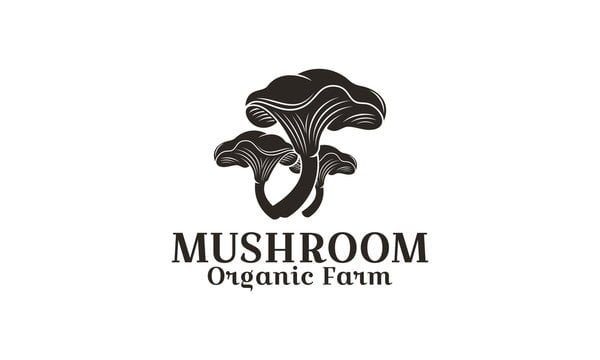No products in the cart.
NORTH SPORE Chestnut Mushroom Grow Kit Fruiting Block
$40.00 Original price was: $40.00.$30.00Current price is: $30.00.
Category: Mushroom | Fruiting Blocks
NORTH SPORE Chestnut Mushroom Grow Kit Fruiting Block
Chestnut (Pholiota adiposa) is a popular cultivated mushroom in Japan. It produces velvety, small-to-medium, delightfully speckled caps resembling the color of their namesake nut. When cooked, they have a woodsy aroma, a meaty heaviness, and a rich, nutty, mildly-sweet flavor.
The chestnut variety is one of the easier advanced fruiting block kits. The first flush yields large beautiful clusters of brownish-red mushrooms. However, it can be trickier to get subsequent fruitings, so attempting a second or third flush requires a little extra work and attention.
| Skill level | Intermediate |
| Grow location | Indoors |
| Grow speed | 2 to 3 weeks |
| Shelf life | 6 months (refrigerated) |
| Flavor profile | Nutty, woody, sweet |
| Kit dimensions | 6in H x 9in W x 6in D |
| Kit weight | 5 lbs |
Instructions
1) Your chestnut fruiting block is an amended sawdust block that has been completely colonized by chestnut mushroom mycelium. Take the block and place it on its side, exposing a side where the block presses right up against the plastic bag. Take a sharp knife and slice a 5-6 inch slice along the bag, slicing the bag with as little damage done as possible to the block. Gently squeeze out any air left in the bag, take the loose flap without mushroom substrate in it, and fold it underneath the kit. The chestnut mushroom mycelium will sense the oxygen in the air and produce mushroom ‘pins’, another word for ‘baby mushrooms’. This should begin to happen within two weeks of slicing your bag.
2) Mushrooms need proper humidity and ventilation to survive. Place your sliced bag in your BoomRoom or the most humid part of your home and outside of direct sunlight (ie. on a kitchen counter somewhat close to a sink). If you are not using a humidification system, spray the outside of your block near the slice at least once per day.
3) Harvest your mushrooms when they resemble the photograph on this page. Harvest before the caps flatten out and become concave. Mushrooms grow quickly, so when you spot your first mushroom pins keep a close eye on them. The warmer the environment the faster they will grow. Mushrooms should be ready to harvest 5-10 days after pin formation.
4) Harvests usually diminish in size with each consecutive fruiting. We recommend giving your block a one week break from spraying, then soaking your block in cold water for 20 minutes, and re-starting the process of spraying your blocks with water daily!
⮕ Click for printable instructions
Temp, Humidity & CO2 guide
| Fruiting temps | 60-70 degrees F |
| Humidity | 88-95% |
| CO2 Sensitivity | <1,000 ppm |
- Fruiting – The phase of growth in which visible mushrooms begin to appear.
- CO2 sensitivity – When CO2 levels are too high, yields will decrease, stems will become long and stringy, caps will be small, and/or growth will halt.
Storing
If you don’t plan to use immediately, you can refrigerate your block for up to 6 months.
Cooking
For those who enjoy the distinct nutty flavor of chestnut mushrooms, we recommend frying them up with butter and garlic or adding them to your favorite creamy soup or pasta dish. As with other mushrooms, chestnut mushrooms require thorough cooking. However, given their lower moisture content, they do not require “sweating” in the pan.
Creating a humidity tent
If your home is really dry you may want to make a humidity tent to place over your bag. Simply take a trash bag or other loosely fitting plastic bag, put PLENTY of 1/2 inch holes in it (THIS IS IMPORTANT mushrooms exhale CO2 and inhale Oxygen. They will suffocate themselves if there isn’t adequate airflow! Chestnuts that look stringy or strange are usually growing that way because they need more air!) If you choose to use a humidity tent make sure to spray the inside of the tent once per day to maintain humidity.
Cautions & considerations
If you’re going to consume home-grown mushrooms, make sure to cook your fresh mushrooms thoroughly with heat. If it is your first time eating this species, it is best to start with a small amount to check for allergies, even if cooked.
Mushrooms grow spores as they develop. This is a natural means of reproduction. This is when people with allergies or compromised immune systems may want to consider putting fruiting mushroom kits outdoors or in a well-ventilated area. Spores in mushrooms sometimes cause respiratory irritation. In rare cases, spores may also cause irritation for some non-allergic or non-immunocompromised mushroom growers. If you are one of them, it is recommended to reduce the overall spore load by harvesting mushrooms while they are still in their younger growth stages.
Be the first to review “NORTH SPORE Chestnut Mushroom Grow Kit Fruiting Block” Cancel reply
Related products
Sale!
Mushroom | Fruiting Blocks
Sale!
Mushroom | Fruiting Blocks
Sale!
Mushroom | Fruiting Blocks
Sale!
Mushroom | Fruiting Blocks
Sale!
Mushroom | Fruiting Blocks
Sale!
Mushroom | Fruiting Blocks
Sale!
Mushroom | Fruiting Blocks
Sale!
Mushroom | Fruiting Blocks



























Reviews
There are no reviews yet